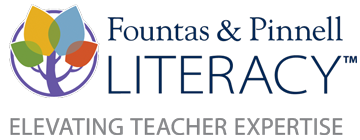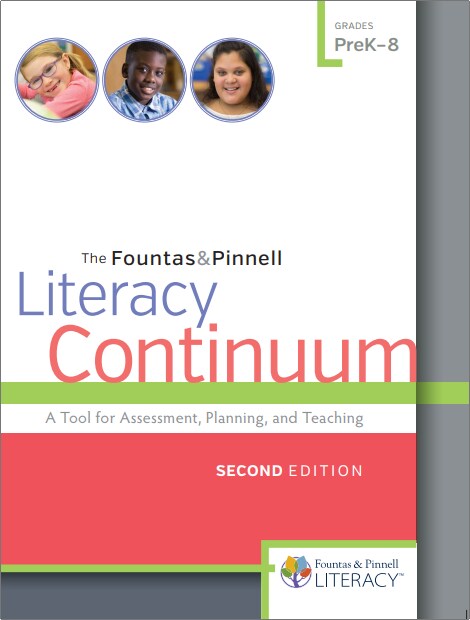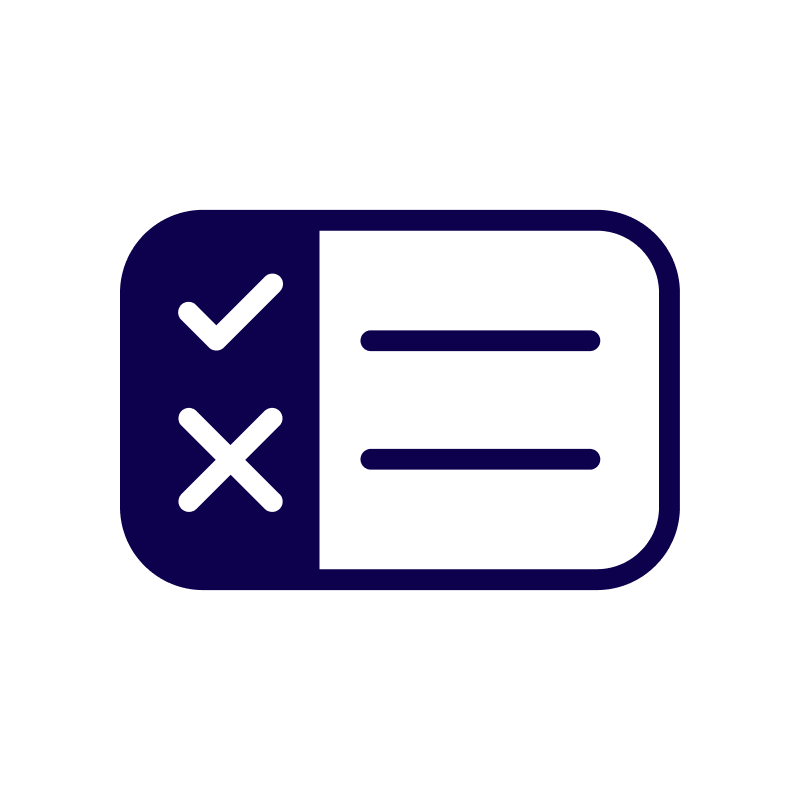What is the Literacy Continuum?
The Continuum is a tool which allows you to analyze texts and student reading and writing behaviour to promote greater proficiency. It will help you avoid the pitfalls of prescribing tasks which are not quite what your students need at this time for their next steps. It is a complex, cumulative document in which specific behaviours and understandings at each grade and text level gradually build in carefully calibrated increments of difficulty across all literacy contexts within a school day.
The Continuum provides descriptions of text characteristics and student proficiencies across eight instructional contexts.
- Interactive Read-Aloud
- Shared and Performance Reading
- Writing About Reading
- Writing
- Oral and Visual Communication
- Technological Communication
- Phonics, Spelling, and Word Study
- Guided Reading
The brief introduction to the continuum is packed with valuable information. It describes the principles the continuum is based on, provides an overview of the content, and suggests ways to use the continuum. Each of the instructional contexts has a very brief introduction which describes that context, how it is organized and how to use it in your classroom setting.
The Continuum also includes an appendix about Grammar, Usage and Mechanics which students learn across all the continua. This appendix is designed to give you a body of knowledge to help you think about the kind of constructions and mechanics you want students to notice. It recommends that, rather than teaching by correcting their errors, you immerse students in rich talk and teaching in order to support them as they build a working knowledge of oral and written language structures.
How Does it Work?
Each instructional context is organized by grade except Guided Reading which is organized by text level. Each reading related continua describes behaviours and understandings a reader needs in order to successfully meet the demands of the text at that grade or text level. The behaviours and understandings provide a menu [not a check-list] of teaching goals you can select from to guide the intentional conversations you will want to have with your students about the texts. The level of teacher support provided in these intentional conversations depends on the nature of the Continuum, ranging from high teacher support in Interactive Read Aloud through Shared Reading and Guided Reading to the lowest teacher support in Independent Reading.
Behaviours & Understandings
The reading behaviours and understandings you want to notice, teach and support are organized into a network of twelve strategic actions. A model of the Network of Strategic Actions is found on the inside front cover of the Fountas & Pinnell Literacy Continuum. It helps you conceptualize the invisible, fast and complex in-the-head activity that proficient readers do in an integrated way on increasingly complex texts. These twelve strategic actions are organized into three categories:
Thinking Within the Text - how readers use the print information right there on the page
- Thinking Beyond the Text - how readers interpret the information
- Thinking About the Text - how readers appreciate the writer’s craft
In all the reading continua talking about books is essential to help readers think about texts in these three ways. Conversational discussions about the texts before, during and after reading help to expand thinking within, beyond and about the text.
Demands of the Texts
You need to know your students as readers and writers really well but you also need to know the demands that your tools, which are the texts, make on each reader. The texts are the tools you use to help students to think more proficiently about print and to talk in depth about what they understand. The four reading related continua describe the characteristics of texts and the demands they make on the reader. Fountas and Pinnell use ten text characteristics to level their books on a gradient of difficulty. Text characteristics are described for each of the continua related to reading. They help you match the characteristics of the texts to your students’ strengths and needs.
The bullets for each behaviour and understanding, text characteristic or writing purpose in the Literacy Continuum are coded by shape and colour to correspond with thinking within, beyond and about the text on the Network of Strategic Actions graphic. Red bullets indicate behaviours and understandings that appear at this grade or text level for the first time.
Who Uses the Literacy Continuum?
Teachers use the Literacy Continuum to guide their observations of reading and writing behaviour and to identify student strengths and needs. It helps with the
- interpretation of running records and reading records to identify strategic actions readers are using and neglecting
- selection of texts that a just right for a group of readers at any one time
- selection of teaching goals appropriate to the changing needs of students based on observation and interpretation of current reading behaviours.
- identification of word work appropriate for students at each text level
- daily inclusion of all areas of classroom literacy
- building a cohesive understanding and common language among your colleagues
Literacy Coaches use the Continuum as a bases for coaching conversations. When used as a reference before, during and after lessons it helps to focus the conversation on critical areas of teaching and learning.
Members of the school leadership team use the Continuum to build a shared vision of literacy instruction, common expectations for students’ achievement and a coherent way of talking about progress.
The Fountas & Pinnell Literacy Continuum is an awesome resource! But don’t let its breadth and complexity discourage you from using it! Once you know how it is structured and how it works you can easily navigate the areas relevant to your students. It will help you respond to the specific strengths and needs of your students. It will help your students construct the proficiencies they need to engage their hearts and minds in lifelong literacy.
Knowledge of Your Readers
The Fountas & Pinnell Literacy Continuum is a tool that supports a way of thinking about and shaping the reading behaviours you observe on a daily basis in your classroom. It is a roadmap for guiding readers to build proficient ways of thinking as they engage with a variety of texts. It helps you design responsive interactions with your students. Responsive teaching is driven by your knowledge of your students as readers, the texts you use as tools, and your understanding of the reading process.
“The goal is to use assessment to grow in our understandings of our students and of the processes involved in learning to read.” [2017 p.211]
Both interval [summative] assessment and continuous [formative] assessment are essential if we want to grow our understandings and engage in responsive teaching. Fountas and Pinnell have developed interval assessment systems [Fountas & Pinnell Benchmark Assessment Systems 1 and 2] which can be administered two or three times per year to determine initial grouping and monitor progress over time. You can use the Fountas & Pinnell Literacy Continuum to interpret the data you gather from these assessments and to plan for further learning. For instance, you might notice from analyzing Peter’s reading records that he tends to make meaningful substitutions but neglects to check that his substitutions match the print. You could
- identify the strategic actions to teach for using the Network of Strategic Actions on the inside front cover of the The Fountas & Pinnell Literacy Continuum [e.g. Monitoring & Self-Correcting]
- consult the corresponding section [i.e. Monitoring & Self-Correcting] of whichever reading related continuum you wish to use [e.g. Guided Reading Level L]
- select specific behaviours or understandings that would help Peter build more effective ways of processing texts [e.g. Use multiple sources of information…to monitor and self-correct].
Using The Fountas & Pinnell Literacy Continuum in this way helps you to identify intentional conversations which will respond to specific student needs. You can use the Prompting Guides 1 [Thinking Within the Text] & Prompting Guide 2 [Thinking Beyond and About the Text], in conjunction with the The Fountas & Pinnell Literacy Continuum to select the most appropriate teaching language. The Prompting Guides answer the question “What do I say if I don’t ask comprehension questions?”
As you observe Peter reading on a daily basis you may be able to identify behaviours and understandings he is consistently applying but which are new to his repertoire as a reader. You would want to select language that reinforces what he is doing by pointing out what he did effectively [e.g. “You thought about what made sense there and made it look right”]. Other behaviours and understandings may be a little insecure and only partially evident. These you could prompt for, reminding him to do more consistently what you know he can do because you have evidence of it [e.g. “Think about what makes sense in this story and what would look right”]. Behaviours for which there is little or no evidence would need to be explicitly taught [e.g. ____ would make sense there but watch how I say that word slowly and run my finger under it to see if it looks right.”] Prompting Guide 1 provides teacher language which is concise and precise to teach, prompt or reinforce ways of thinking about texts, also referred to as a Network of Strategic Actions.
Observing and Teaching for a Network of Strategic Actions.
The Network of Strategic Actions provides a broad canvas on which to portray how a reader is thinking about a text. It reminds you to think about all twelve ways of thinking as you observe and interpret reading behaviour. At the same time, the detailed gradient of behaviours and understandings helps you know what to look for and interpret what you notice at each text level or grade.
Reading is a highly complex process and while we know what good reading looks and sounds like, readers take individual paths to proficiency. It is unlikely that any reader will read different texts in exactly the same way, or that any two readers would read the same text in exactly the same way. You need to be an acute observer of how readers interact with different kinds of texts and how those interactions approximate proficient reading. The Fountas & Pinnell Literacy Continuum maps that gradient of challenge in minute increments of difficulty.
The increments of difficulty for three of the four reading continua [Interactive Read Aloud, Shared & Performance Reading and Writing About Reading] are organized by grade. The Guided Reading continuum is organized by text level. It includes a profile of readers at each text level, characteristics of texts at each text level and behaviours and understandings to notice, teach and support at each level. The profile paints a portrait of what readers look like at each text level so you have a broad target to aim for. The ten text characteristics help you select appropriate texts and identify teaching opportunities within those texts. As you think more analytically about the texts you select you hone your skill at using them as effective tools for extending reading proficiency: tools with which readers can build a successful processing system. They provide a menu from which to select appropriate teaching emphases.
Of course these selections will change for whole group, small group and individual instruction as you work with the different continua day by day and throughout the year. But you can be confident that with the Fountas and Pinnell Literacy Continuum to guide your observations and interpret your assessment, your instruction will stay in line with what your readers can do as they move incrementally towards fluent reading with deep comprehension of increasingly complex texts. You can use the behaviours and understandings to identify not only what to teach but to observe how effective the teaching was.
“If assessment does not result in improved teaching, then its value is greatly diminished” [2017 p.210]. The Fountas & Pinnell Literacy Continuum helps you improve your teaching by bringing your knowledge of your student reading behaviours together with the characteristics of texts you select. As you refine your observations and interpret your assessment data you are able to design dialogue with students and monitor changes in the ways they process texts. The Fountas & Pinnell Literacy Continuum serves as the bridge from your observations and assessment data to your discussions and intentional conversations that will guide your readers to greater proficiencies in reading and writing.







